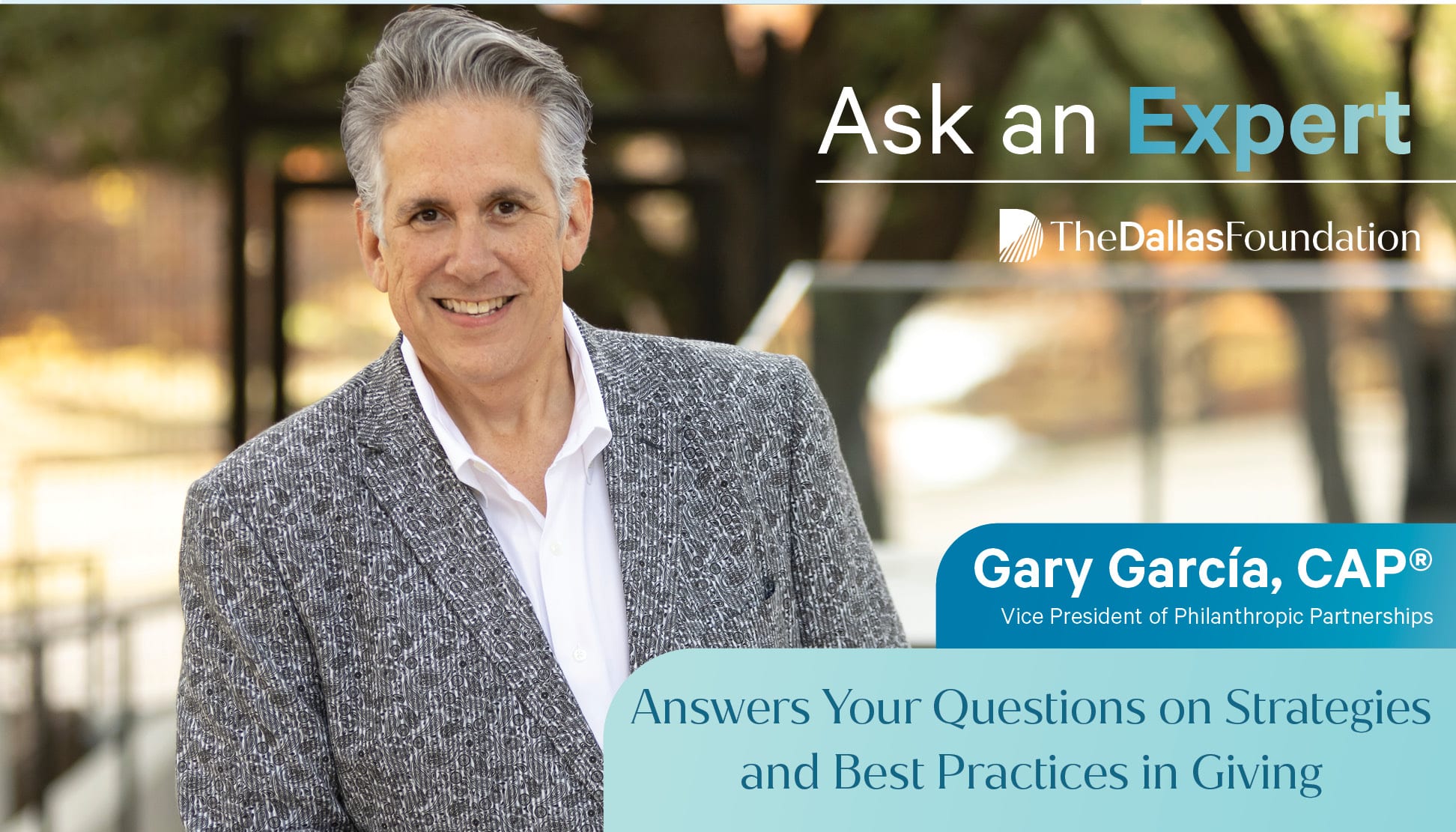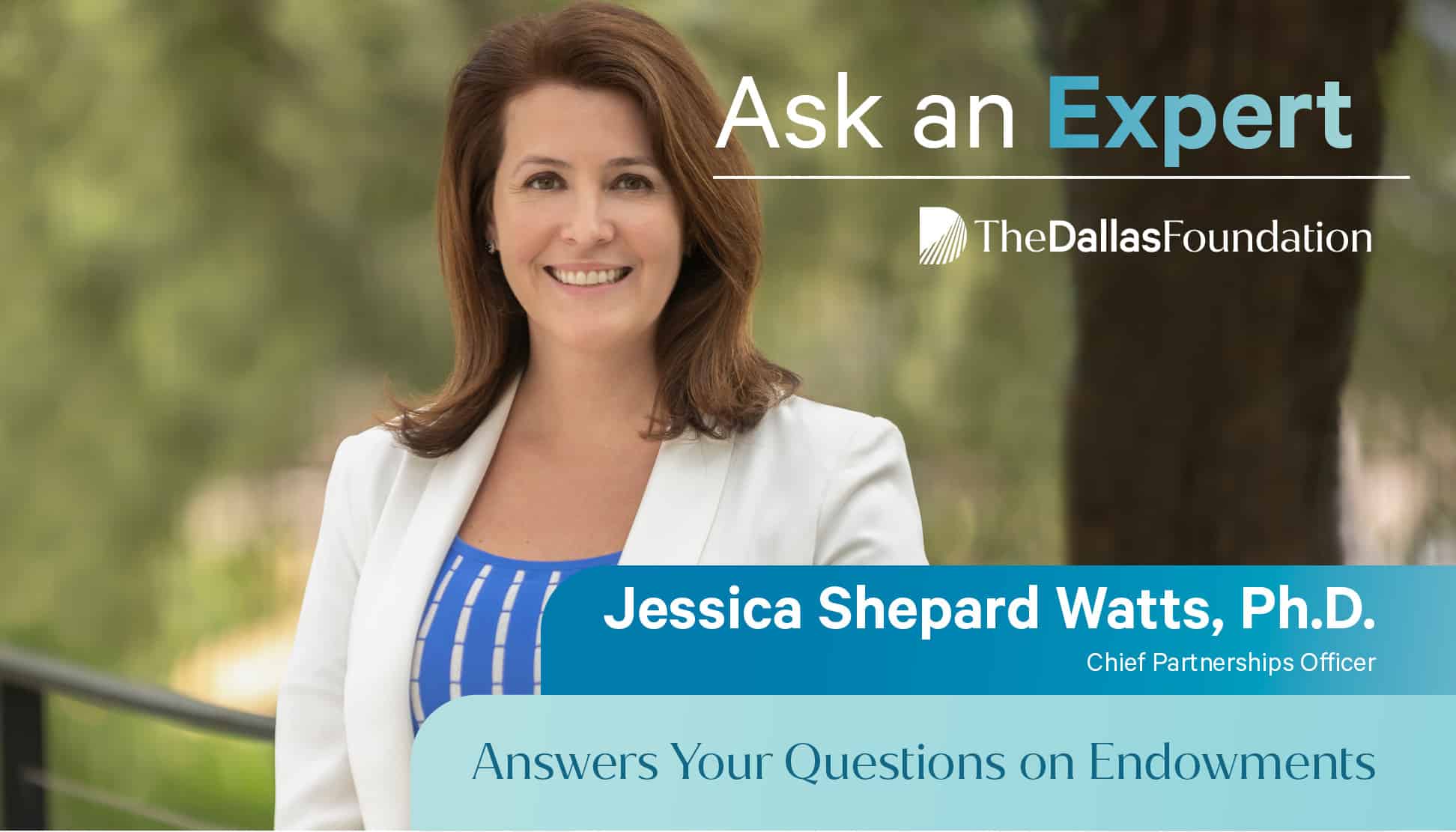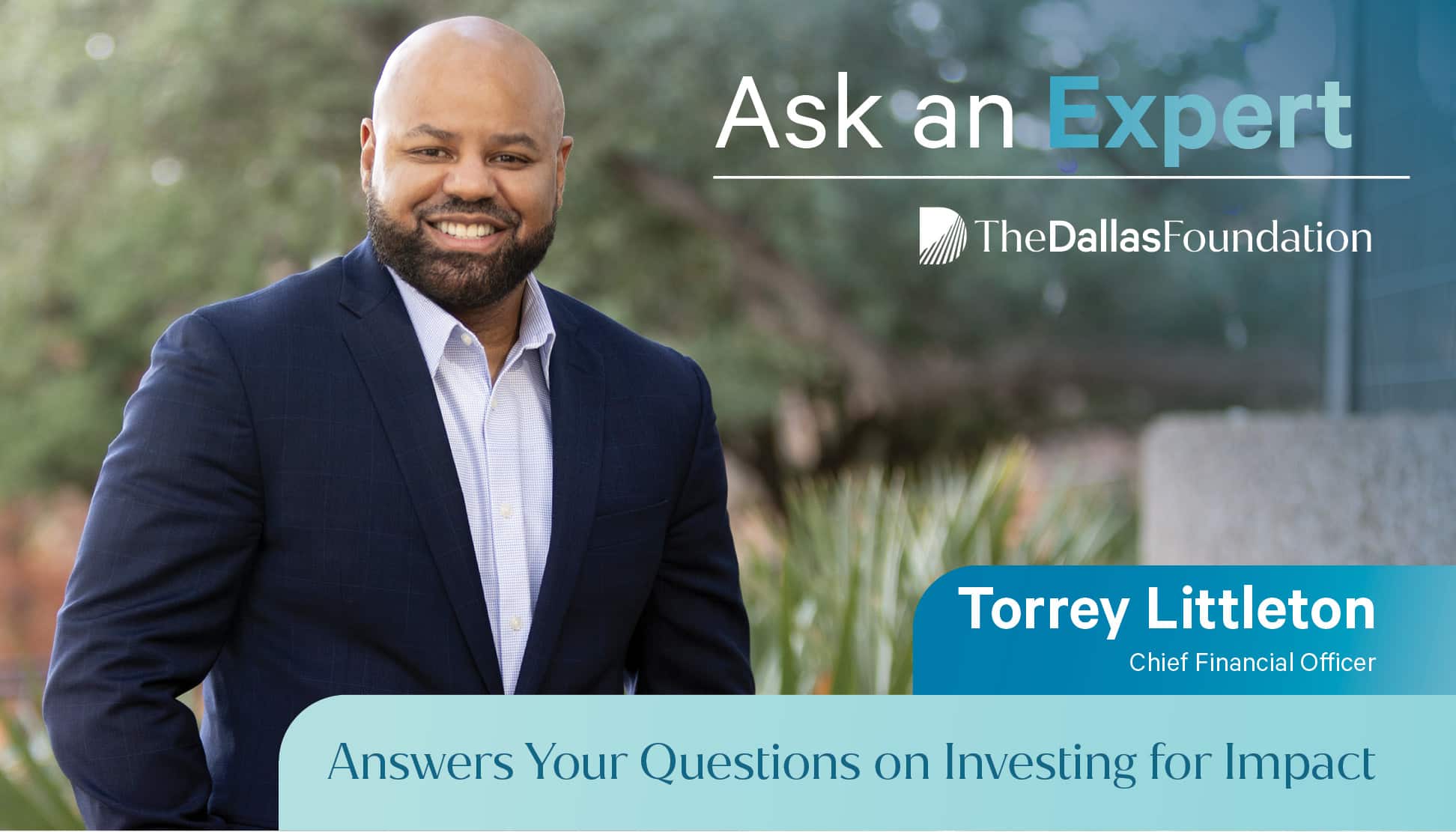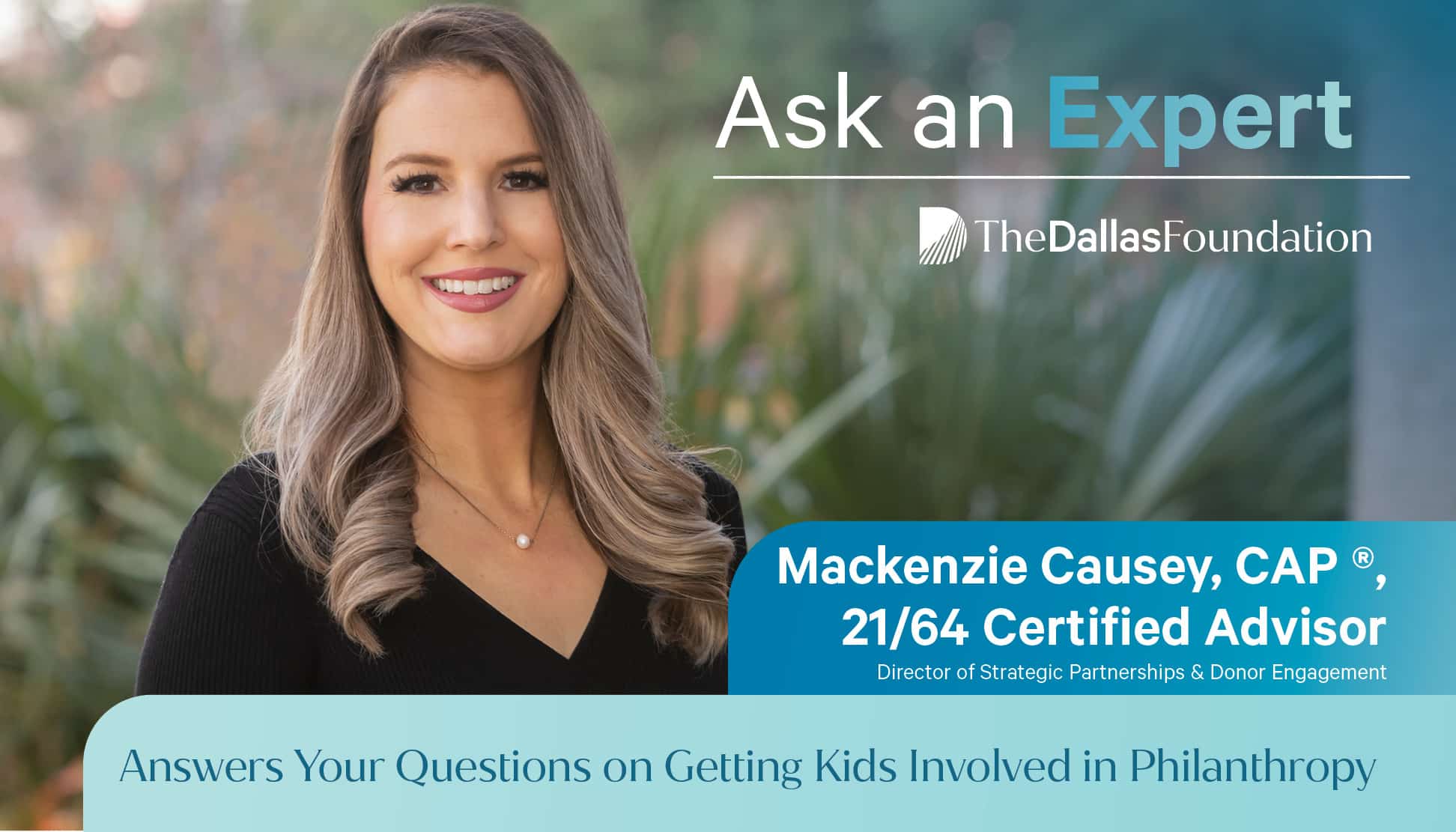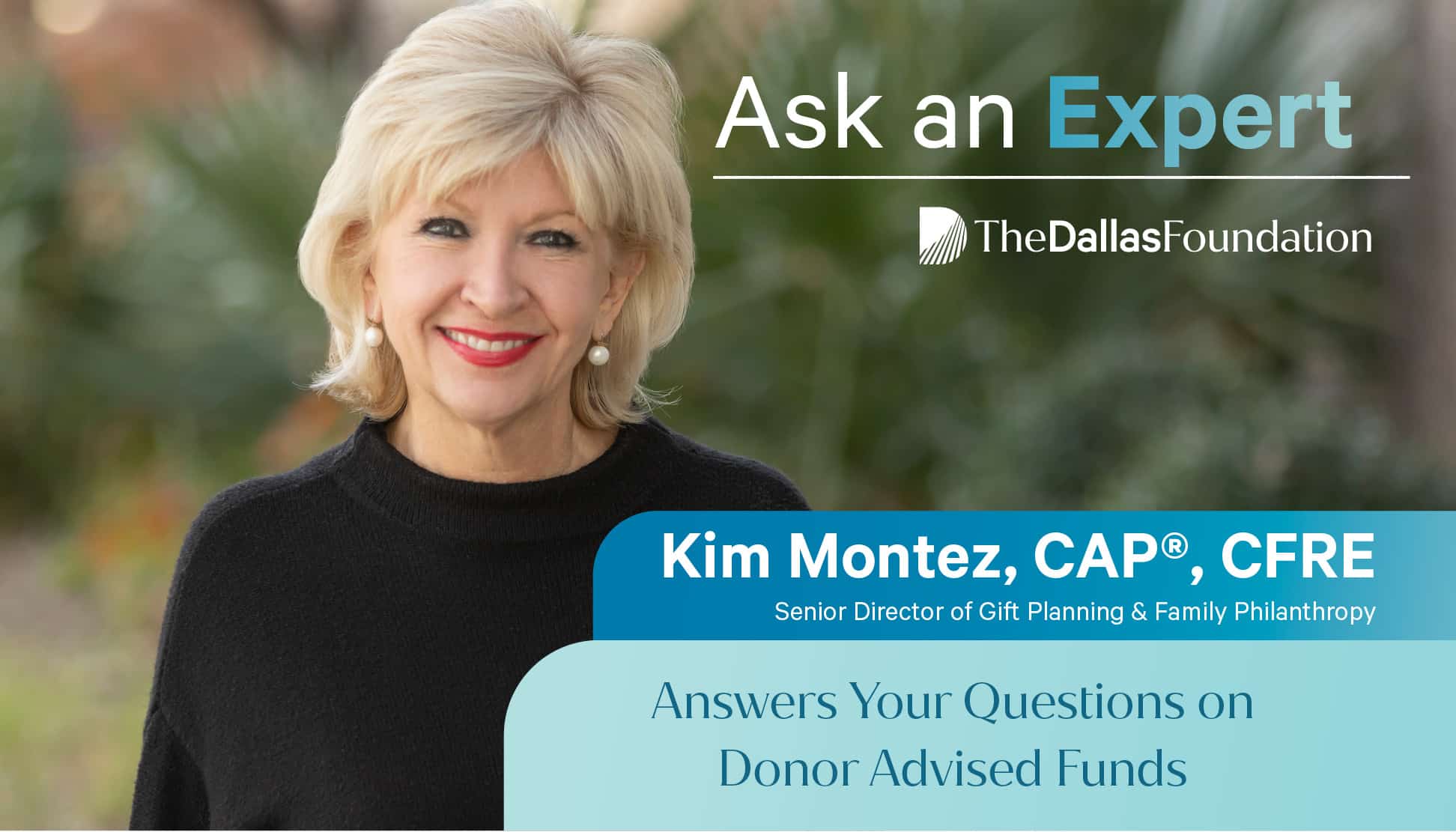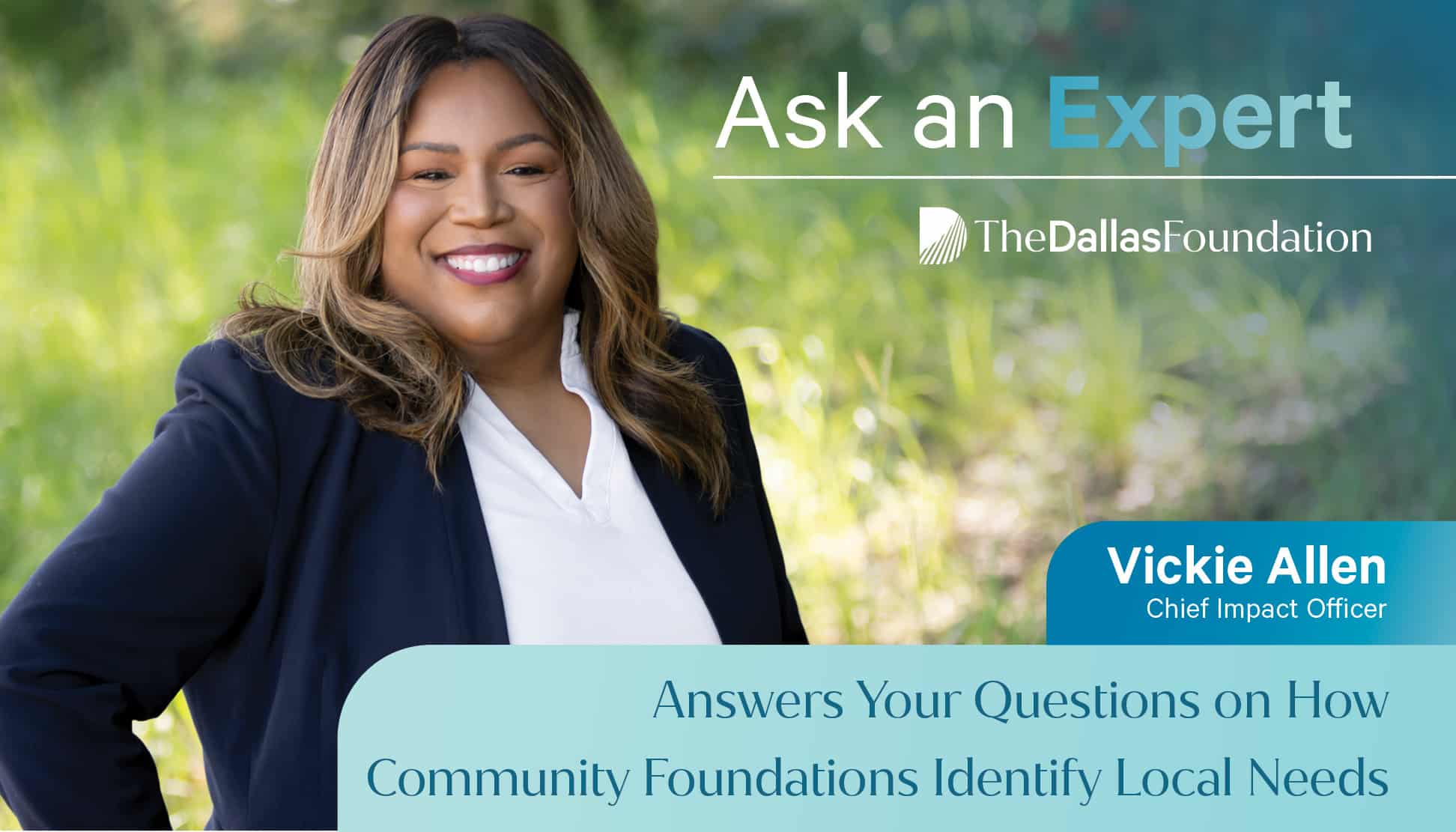Community foundations are grounded in place. One of their most important responsibilities is to understand what local communities really need—and then to help catalyze solutions. In this installment of our Ask an Expert series, Vickie Allen, Chief Impact Officer at The Dallas Foundation, shares how community foundations identify local needs, the role of partnerships in the process, and how those insights are turned into action.
How do community foundations begin the process of identifying local needs?
It always starts with listening. We engage directly with residents, nonprofits, and community leaders to hear what they are experiencing on the ground. That might include hosting listening sessions, conducting surveys, or visiting neighborhoods where challenges are most visible. We also pair those voices with quantitative data—things like Census figures, health outcomes, or education metrics—to make sure we see both the lived experience and measurable trends. This combination of listening and data collection gives us a full picture of where needs exist and how they affect different populations.
What role do partnerships play in understanding these needs?
Partnerships are essential. No single organization has the full picture of what a community experiences. Local nonprofits, schools, healthcare providers, government agencies, and grassroots groups each bring unique insights. By collaborating with them, we avoid duplication of effort, uncover service gaps, and spot opportunities that might not be obvious in the data alone. These partnerships also build trust, ensuring that when we prioritize an area of need, we align with others already doing important work.
How does The Dallas Foundation turn identified needs into action?
Once we understand the greatest needs, we move into prioritization. We ask questions like: How urgent is this issue? Does it align with our mission? Do we have the partners and resources to create sustainable impact? From there, we develop strategies that include targeted grantmaking, capacity-building for nonprofits, or policy advocacy. Because community needs constantly evolve, we revisit our assessments regularly to keep our work relevant and impactful.
A Commitment to Listening and Adapting
How community foundations identify local needs is not a one-time exercise—it’s a continual commitment. As landscapes shift, as new populations move in, as crises emerge, foundations must listen, learn, and adapt. The most powerful change comes when community foundations act as conveners, connectors, and amplifiers—bringing together data, people, and resources in ways that reflect what people really need, not what we think they need.

